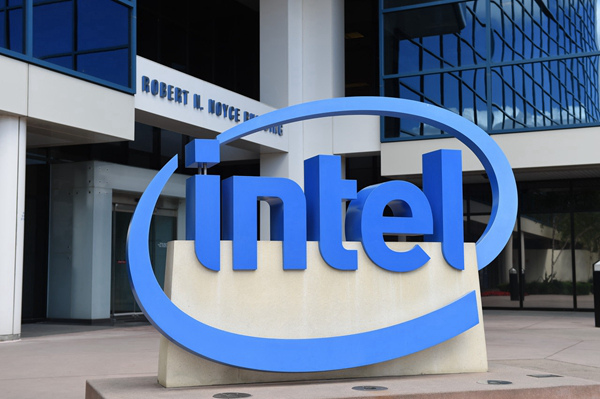Pushing open the door to the new era PC, Intel's new "AI processor" analysis

In September of this year, we at Sanyi Life took the lead in "analyzing" Intel's latest generation mobile processor architecture based on the latest architecture information at that time and some exclusive internal data we obtained.
Of course, now everyone knows that the object we were "parsing" at that time was a certain ES version of the first generation Core Ultra processor that had just been released.
However, to be fair, the information we received at that time was still relatively early, so although it had been explained in great detail, there was still some gap before the final version was released. This is why we need to pay close attention to Intel's new product launch event on December 15, 2023. In terms of results, this event did not disappoint us.
Bigger and stronger, the fifth generation of expandable and powerful "Big Killer" is introduced
It has to be said that the biggest difference between Intel's new product launch event and previous ones is that it is almost the first time that they have combined the new cloud server CPU products for enterprises with the new end computing device CPU products for consumers.
The first to debut is the fifth generation Xeon Scalable Processor. According to relevant technical data, compared with the fourth generation Xeon Scalable Processor, the new CPU codenamed "Emerald Rapide SP" still uses the Intel7 process, but has undergone a significant redesign of the architecture.
The fifth generation Xeon Scalable Processor, which made its debut this time, has a complete specification of 64 cores instead of the previous generation's 60 cores, and these cores are now divided into 2 MCM modules instead of the previous generation's 4. This also means that every CPU module in the new architecture has more than twice the number of cores as the previous generation.
On this basis, the basic architecture of the fifth generation Xeon Scalable Processor has also been updated from Golden Cove to Raptor Cove, which means that it, like the familiar 13th and 14th generation Core processors, has significantly enhanced its cache and memory subsystems. For example, comparing the new Xeon8592+with the previous generation Xeon8490H, it can be found that its L3Cache has increased from 112.5MB to 320MB in one go. Compared with the previous generation DDR5-4800, the starting memory frequency of the eight channel DDR5-5600 also represents a significant enhancement in its memory bandwidth.
Of course, the above architectures and performance improvements mainly serve cloud service providers such as JD.com, Alibaba, and Baidu. That is to say, its function is to accelerate the iteration and application efficiency of AI models in the cloud today. But in addition, everyone knows that Intel also has a relatively "civilian" product line Xeon W aimed at audiophiles, so the fifth generation's scalable architecture is actually a disguised preview of many information about the next generation Xeon W.
More cores, stronger graphics, and NPU, Core Ultra is here
The highlight of this press conference is the all-new Intel Core Ultra processor.
Firstly, in terms of architecture, the first generation Core Ultra was Intel's first processor to adopt a multi module, multi process hybrid packaging design. Each core of it has four modules, namely a CPU module using Intel4 process, a GPU module using TSMC 5nm process, a SoC module using TSMC 6nm process, and an IO module based on TSMC 6nm process.
What are the benefits of this design? On the one hand, it allows the processor to integrate more functional components. For example, taking the highest positioned Core i9-185H of this generation as an example, its CPU module integrates 6P+8E, a total of 14 CPU cores, and there are also 2 additional E-cores in the SoC module, which can completely shut down the CPU module when running extremely low loads, thus achieving the goal of more power saving.
For example, the ARC GPU module of Core Ultra now has a more "comprehensive" Xe architecture. It has a maximum of 128 execution units (instead of the previous generation's 96), can run at a frequency of up to 2250MHz, and has 64 texture units and 32 raster units. In addition, it supports hardware ray tracing and XeSS hardware AI super-resolution anti aliasing. Under such a configuration, the performance of the new core graphics FP32 can reach up to 4.608 TFlops, which is equivalent to twice the performance of the previous generation.
In addition, the Core Ultra has also become Intel's first mobile processor solution with integrated NPU, and according to relevant technical data, its NPU computing power can reach 10TOPs. At the same time, it also integrates the Thunderbolt 4 controller.
In addition to significant improvements in architecture and design, the Core Ultra also has a very noteworthy highlight this time, which is that the default TDP of its standard version is only 28-45W, and the maximum TDP is only 115W. It should be noted that since the 11th generation, the standard pressure mobile version of the Core has not had such a low official TDP parameter for a long time. High end standard pressure mobile CPUs such as the 14900HX have an official maximum TDP setting of 157W. From the relevant information currently exposed through various channels, the ultra-high energy efficiency ratio is likely to be the outstanding highlight of the first generation Core Ultra in practical use.
How to make 'AI PC' truly practical, Intel has indeed set a good example
If you have paid attention to recent related information, you must know that Intel's competitors, such as Qualcomm and AMD, have already released mobile CPU product lines with independent NPUs. In contrast, Intel's Core Ultra series came relatively late.
But this does not mean that Intel started later than its competitors in the "AI PC" technology roadmap. In fact, as early as 2019, Intel had already added the DL Boost instruction set for accelerating deep learning computations to its Core X series processors (Cascade Lake) for the first time.
In the 10th and 11th generation Core Mobile versions, DL Boost and AVX-512 instruction sets were further popularized in more popular products, enabling many laptop products at that time to have AI experiences such as camera centering, microphone noise reduction, and video super-resolution.
As Intel introduces the Xe architecture into the core graphics of Core processors, these graphics actually have AI acceleration capabilities. For example, on some 12th and 13th generation Core laptops, as well as desktop PCs, you can see AI voice assistants and AI background blurring functions implemented based on core display computing power.
That's why, in the first generation Core Ultra processor, although on the surface, its "AI unit" seems to be an NPU. But in fact, Intel has long established a heterogeneous acceleration system that allows CPUs, GPUs, and NPUs to undertake different AI tasks based on different codes, and sometimes even collaborate on computing. They call this technology "XPU".
Moreover, more importantly, at today's press conference, it can be seen that Intel has brought in a large number of domestic software vendors to demonstrate the effectiveness of their products in accelerating operation through AI on the Core Ultra. According to Intel, even at the time when this product was just released, the Core Ultra had already received official adaptations for over 100 software, which could unleash the acceleration effect of AI.
It has to be said that compared to simply stuffing hardware AI acceleration units into the CPU, Intel's unique heterogeneous processing design and the extensive adaptation they have made to promote the popularity of "AI PCs" may be the most obvious advantage of the Core Ultra over its competitors.





